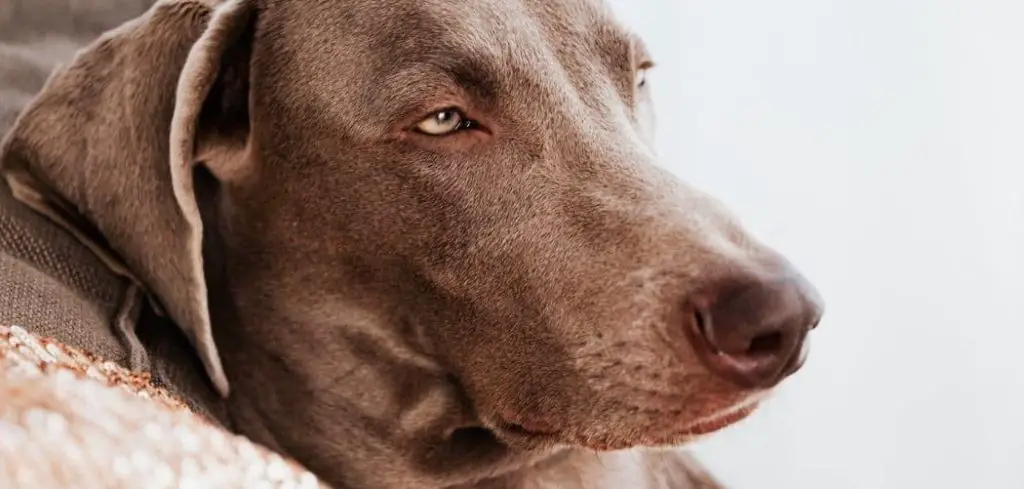When your dog is both panting heavily and drinking water excessively, it’s a signal that something beyond normal thirst or heat may be at play. While both behaviors can occur after exercise or in warm weather, they may also indicate illness, pain, or an internal imbalance.
We outline the common causes of dog panting and very thirsty, what you can do at home, and when to seek veterinary help.
Dog Panting and Very Thirsty — Why It Happens
Heavy panting paired with excessive thirst often points to internal stress, hormonal disorders, overheating, or underlying disease. While some causes are temporary and harmless, others may be early signs of chronic or life-threatening conditions.

Common Causes of Dog Panting and Very Thirsty
Dehydration
If your dog is panting heavily and drinking a lot, they may be trying to recover from dehydration.
This can occur after intense activity, hot weather, or vomiting and diarrhea.
Other signs include sunken eyes, dry gums, and lethargy.
Severe dehydration can cause organ dysfunction and must be treated with fluids—often intravenously at a clinic.
Mild cases may respond to rest and clean water, but always monitor carefully.
Heatstroke
Dogs cool themselves through panting. If they’re also drinking rapidly, they may be trying to compensate for overheating.
Heatstroke is a medical emergency. Symptoms include intense panting, drooling, red gums, confusion, vomiting, or collapse.
It occurs when a dog is left in a hot environment, overexerts in warm weather, or lacks access to water or shade.
Move them to a cool space, apply cool (not cold) water to their body, and call your vet immediately.
Read more: Dog Panting and Shaking (Common causes)
Diabetes Mellitus
Increased thirst and urination are hallmark signs of diabetes in dogs.
Panting may occur due to high blood sugar levels, weight loss, or secondary infections.
You may notice your dog eating more but still losing weight, or urinating more frequently.
Diabetes requires lifelong management with insulin, diet changes, and regular monitoring.
Early diagnosis through bloodwork can prevent complications like diabetic ketoacidosis.
Cushing’s Disease (Hyperadrenocorticism)
Dogs with Cushing’s often exhibit excessive thirst, panting, and a pot-bellied appearance.
It results from the overproduction of cortisol, which disrupts many bodily functions.
Symptoms develop gradually and may include hair loss, thin skin, and increased appetite.
Cushing’s is typically diagnosed via blood and urine tests and treated with medication or surgery, depending on the cause.
Kidney Disease
When the kidneys are compromised, they can’t conserve water efficiently—leading to increased thirst and urination.
Panting can result from toxin buildup, discomfort, or anemia caused by declining kidney function.
Other signs include bad breath, vomiting, weight loss, or pale gums.
Chronic kidney disease is common in older dogs and requires dietary adjustments and fluid therapy.
Pain or Discomfort
Dogs in pain may pant heavily and drink more due to nausea, inflammation, or anxiety.
Injuries, arthritis, dental disease, or gastrointestinal issues can all cause this response.
They may also be restless, avoid certain movements, or isolate themselves.
A vet exam can uncover hidden pain and recommend appropriate treatment.
What to Do If Your Dog Is Panting and Very Thirsty
Provide fresh, cool water—but don’t let your dog drink too quickly if they’re distressed.
Move them to a shaded or cool indoor environment.
Check for other symptoms like vomiting, limping, or unusual behavior.
Note how much water they’re drinking daily—excessive drinking (polydipsia) may be over 100 ml/kg/day.
Avoid exercise in the heat and never leave your dog in a car or confined area without ventilation.
If the symptoms persist, schedule a vet appointment and bring notes on behavior and water intake.
When to Call or Visit Your Vet
Get veterinary help if your dog:
Drinks excessively for more than a day
Pants constantly while at rest or in a cool environment
Shows other signs like vomiting, weight loss, or changes in appetite
Has a known medical condition like diabetes or kidney disease
Is disoriented, lethargic, or appears weak
These symptoms could signal conditions that worsen over time if not treated promptly.
Read more: Dog Panting and Drooling (What it means)
Key Takeaway
Heavy panting and excessive thirst are warning signs your dog may be unwell.
Monitor their symptoms, provide a safe and cool environment, and avoid delaying veterinary care—especially if the behavior is new or escalating.
Your observations can be key in helping your vet diagnose and treat the underlying cause early.
